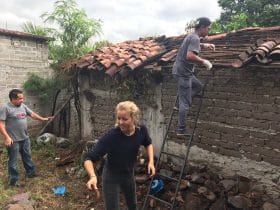
Sep 27, 2017 | Focolare Worldwide
 “Many of us stepped forward right away to help, along with the overwhelming majority of Mexican people, even though we were completely grasped by fear, as we tried to gather the requests for help that were coming in from every corner Mexico City and from the regions of the outback that were also hard hit. The strong sense of solidarity was everywhere. Hotels opened their doors to those who had lost homes. Doctors and psychologists offered services for free; families cooked and shared soup for everyone. Hundreds of volunteers worked hard without rest. They were all ordinary people who a few hours before were workers, sellers, housewives and employees. Once again in the midst of an emergency Mexicans showed their true colours, never losing hope and spreading joy and enthusiasm even amidst the darkest moments. Streams of people helped out in simple ways, giving the appearance of a living giant rising from the dust.
“Many of us stepped forward right away to help, along with the overwhelming majority of Mexican people, even though we were completely grasped by fear, as we tried to gather the requests for help that were coming in from every corner Mexico City and from the regions of the outback that were also hard hit. The strong sense of solidarity was everywhere. Hotels opened their doors to those who had lost homes. Doctors and psychologists offered services for free; families cooked and shared soup for everyone. Hundreds of volunteers worked hard without rest. They were all ordinary people who a few hours before were workers, sellers, housewives and employees. Once again in the midst of an emergency Mexicans showed their true colours, never losing hope and spreading joy and enthusiasm even amidst the darkest moments. Streams of people helped out in simple ways, giving the appearance of a living giant rising from the dust. 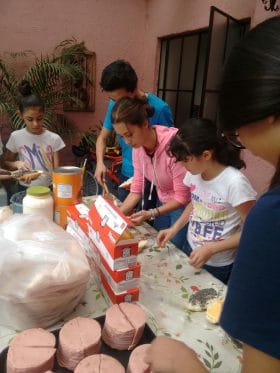 The disaster has also hit cities, such Puebla, Mexico City, Morelos, Chiapas and Oaxaca. Several members of our community offered their help, especially in Puebla and Morelos and other towns where assistance arrived more slowly. One family from Mexico City set up a collection centre in their own home, and then moved to Morelos to distribute foodstuffs and basic necessities to the neediest among the people. The young people from Mariapolis El Diamante went to Contla, located in the State of Pueblo, which was very hard hit by the earthquake. They removed rubble, loaded and delivered foodstuffs, and consoled those who had lost everything. To reach this particular community, which is located in a place that is hard to reach, they had to cross a river and pass over a deep ravine on a rope bridge they constructed on the spot. Meanwhile, the Economy of Communion group from Puebla organized an assistance project at Sant’Antonio Alponocan in another community of the region. Finally, with the goal of coordinating the efforts, we created an emergency committee in Mexico City that launched a census of the damage and of the needs.
The disaster has also hit cities, such Puebla, Mexico City, Morelos, Chiapas and Oaxaca. Several members of our community offered their help, especially in Puebla and Morelos and other towns where assistance arrived more slowly. One family from Mexico City set up a collection centre in their own home, and then moved to Morelos to distribute foodstuffs and basic necessities to the neediest among the people. The young people from Mariapolis El Diamante went to Contla, located in the State of Pueblo, which was very hard hit by the earthquake. They removed rubble, loaded and delivered foodstuffs, and consoled those who had lost everything. To reach this particular community, which is located in a place that is hard to reach, they had to cross a river and pass over a deep ravine on a rope bridge they constructed on the spot. Meanwhile, the Economy of Communion group from Puebla organized an assistance project at Sant’Antonio Alponocan in another community of the region. Finally, with the goal of coordinating the efforts, we created an emergency committee in Mexico City that launched a census of the damage and of the needs.  In those hard moments we always kept in mind the words that Our Lady of Guadalupe spoke to San Juan Diego on Mt Tepeyac, asking him to remember them always: ‘Put this in your heart, my small son: Don’t be afraid. Am I not here who am your Mother? Are you not in my shadow, under my protection? Am I not the source of your joy? Are you not in the folds of my mantle, in my embrace? Is there anything else you could need?’” All of us in the Focolare have strengthened our commitment to work for love and brotherhood, for both the physical and spiritual reconstruction of our land.” Mexico City, September 25, 2017
In those hard moments we always kept in mind the words that Our Lady of Guadalupe spoke to San Juan Diego on Mt Tepeyac, asking him to remember them always: ‘Put this in your heart, my small son: Don’t be afraid. Am I not here who am your Mother? Are you not in my shadow, under my protection? Am I not the source of your joy? Are you not in the folds of my mantle, in my embrace? Is there anything else you could need?’” All of us in the Focolare have strengthened our commitment to work for love and brotherhood, for both the physical and spiritual reconstruction of our land.” Mexico City, September 25, 2017
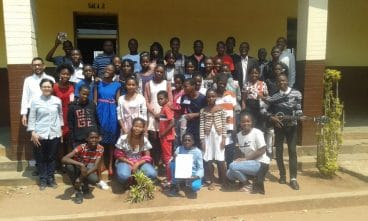
Sep 26, 2017 | Focolare Worldwide
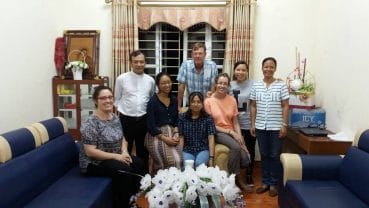 Small groups comprised of young people and adults from different callings in the Focolare Movement spend brief periods in temporary communities known in Italian as “focolares” or “hearths,” far from their homes, visiting far-away and sometimes isolated communities around the globe. This year, there were forty such hearths from Sri Lanka to the Azores, from Vietnam to Santo Domingo, from Brazil to Tanzania. They were self-financed with lots of personal sacrifice. Each community has a different story, but they all share one common denominator: the presence of a temporary hearth that helps bring new life. Idalina and Toni are a family from Portugal. They and seven other people, including some young people, left in August for Saurimo, Angola. “We stayed at the Bishop’s house, and shared our meals and many other moments of the day with him.” During their two-week stay they formed many friendships with the children and adults of the local community: “At the end of the fourteen days, they asked us when we would come back again.” Chiara Lubich’s art of loving turned out to be a great discovery for them.”
Small groups comprised of young people and adults from different callings in the Focolare Movement spend brief periods in temporary communities known in Italian as “focolares” or “hearths,” far from their homes, visiting far-away and sometimes isolated communities around the globe. This year, there were forty such hearths from Sri Lanka to the Azores, from Vietnam to Santo Domingo, from Brazil to Tanzania. They were self-financed with lots of personal sacrifice. Each community has a different story, but they all share one common denominator: the presence of a temporary hearth that helps bring new life. Idalina and Toni are a family from Portugal. They and seven other people, including some young people, left in August for Saurimo, Angola. “We stayed at the Bishop’s house, and shared our meals and many other moments of the day with him.” During their two-week stay they formed many friendships with the children and adults of the local community: “At the end of the fourteen days, they asked us when we would come back again.” Chiara Lubich’s art of loving turned out to be a great discovery for them.”  At Yellowknife, the main city of the region and Seat of the Diocese, we were welcomed by the Emeritus Bishop who has spent his life among the Native American populations of the north. Coming back from a month among Native Americans in Canada’s North West Territories, Father Harry Clark, a priest from British Columbia, Marilena and Mike Murray, a husband and wife from the state of Maryland, in USA, Maria Santana from Montreal and Ljubica Dekic from Toronto write: “From there, we took off for Wha Ti, one of four villages of the Tlicho Tribe, 40 minutes by plane. We were guests of the parish rectory. The villagers were simple folk and very reserved. One of the problems in the tribe is the communication gap between the elderly, who are rooted in Native American culture and the younger generations, who no longer use the tribe’s native language. We presented the spirituality of communion, and then focused our attention on the activities of the small Catholic community for children and adults. We also met some Lutherans and a couple of Mennonite missionaries, a very nice collaboration was begun. We went by canoe along the river and took part in some tribal events with the annual assembly of villages that happened to be taking place during that time.”
At Yellowknife, the main city of the region and Seat of the Diocese, we were welcomed by the Emeritus Bishop who has spent his life among the Native American populations of the north. Coming back from a month among Native Americans in Canada’s North West Territories, Father Harry Clark, a priest from British Columbia, Marilena and Mike Murray, a husband and wife from the state of Maryland, in USA, Maria Santana from Montreal and Ljubica Dekic from Toronto write: “From there, we took off for Wha Ti, one of four villages of the Tlicho Tribe, 40 minutes by plane. We were guests of the parish rectory. The villagers were simple folk and very reserved. One of the problems in the tribe is the communication gap between the elderly, who are rooted in Native American culture and the younger generations, who no longer use the tribe’s native language. We presented the spirituality of communion, and then focused our attention on the activities of the small Catholic community for children and adults. We also met some Lutherans and a couple of Mennonite missionaries, a very nice collaboration was begun. We went by canoe along the river and took part in some tribal events with the annual assembly of villages that happened to be taking place during that time.”  In Bambio, 300 kilometres from Bangui, in the Central African Republic, one temporary “focolare” met a group of Pygmies that has been living the ideal of unity for twenty years. Fidelia writes: “The Pygmies possess so many beautiful values: loyalty, monogamy, purity a sense of the sacred. They told us their experiences in living the art of loving and the Word of Life. Each village meets once a week, from six o’clock in the morning until eight o’clock, before the day begins. The told us: “The focolare taught us to live, to love, to make ourselves one with others. There is no longer ‘you’ and ‘us’ – we’re all ‘us’. The Pygmies don’t mix with others, because they look down on us. But the focolare looked at us as equals and came to live with us, to share our sorrows and joys. They didn’t ask us to become Catholics, but they taught us love.” Someone else said: “We Pygmies have many traditional practices. But ever since we’ve been we’ve been part of the focolare, we’ve dropped a few of them. For example, when my son got sick, I didn’t turn to the witch doctor has I had done before, but took him to hospital. As soon as the focolarinies heard, they came to help me until he was well again.” The gratitude and enrichment was mutual, as the awareness that we’re one family is growing.
In Bambio, 300 kilometres from Bangui, in the Central African Republic, one temporary “focolare” met a group of Pygmies that has been living the ideal of unity for twenty years. Fidelia writes: “The Pygmies possess so many beautiful values: loyalty, monogamy, purity a sense of the sacred. They told us their experiences in living the art of loving and the Word of Life. Each village meets once a week, from six o’clock in the morning until eight o’clock, before the day begins. The told us: “The focolare taught us to live, to love, to make ourselves one with others. There is no longer ‘you’ and ‘us’ – we’re all ‘us’. The Pygmies don’t mix with others, because they look down on us. But the focolare looked at us as equals and came to live with us, to share our sorrows and joys. They didn’t ask us to become Catholics, but they taught us love.” Someone else said: “We Pygmies have many traditional practices. But ever since we’ve been we’ve been part of the focolare, we’ve dropped a few of them. For example, when my son got sick, I didn’t turn to the witch doctor has I had done before, but took him to hospital. As soon as the focolarinies heard, they came to help me until he was well again.” The gratitude and enrichment was mutual, as the awareness that we’re one family is growing.
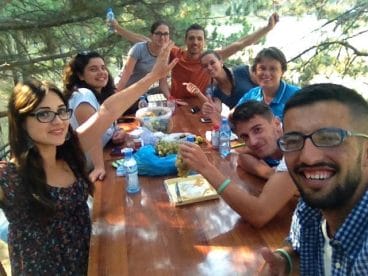
Sep 21, 2017 | Focolare Worldwide
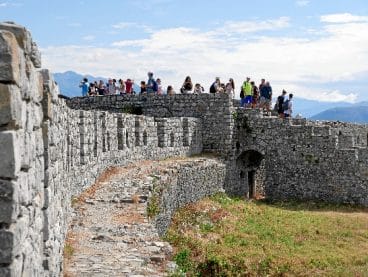 “Sunday 20 August, 2017, 5:00 a.m. From afar, I hear the call to prayer of the muezzin. The thermometer already reads 30°C. I am in a tiny log cabin in the small Village for Peace in Shkodër, in Albania. Built by the Catholic Church for the refugees during the second Balkan war at the end of 1999, it now hosts our camp, go4peace.” So begins the narrative journal of Meinolf Wacker, a young German priest, who for more than 20 years has been involved, along with other priests of the Focolare Movement, in the Balkans – a land marred by wars and divisions – in organizing “schools of peace” for hundreds of young people. His first thought in the morning is of the previous evening, just a few hours ago, and of the huge concert prepared by the youth on the square of the cathedral of Shkodër. At the conclusion of the concert, Mark, who comes from Ireland, gave voice to their appeal: “We are here from the North and the South, from the East and the West of Europe. Peace is a goal we must reach, and we must see in each person a brother or a sister. If we love each other, peace will be the outcome. It takes passion, patience, and tenacity. We want to become a generation full of passion for peace.”
“Sunday 20 August, 2017, 5:00 a.m. From afar, I hear the call to prayer of the muezzin. The thermometer already reads 30°C. I am in a tiny log cabin in the small Village for Peace in Shkodër, in Albania. Built by the Catholic Church for the refugees during the second Balkan war at the end of 1999, it now hosts our camp, go4peace.” So begins the narrative journal of Meinolf Wacker, a young German priest, who for more than 20 years has been involved, along with other priests of the Focolare Movement, in the Balkans – a land marred by wars and divisions – in organizing “schools of peace” for hundreds of young people. His first thought in the morning is of the previous evening, just a few hours ago, and of the huge concert prepared by the youth on the square of the cathedral of Shkodër. At the conclusion of the concert, Mark, who comes from Ireland, gave voice to their appeal: “We are here from the North and the South, from the East and the West of Europe. Peace is a goal we must reach, and we must see in each person a brother or a sister. If we love each other, peace will be the outcome. It takes passion, patience, and tenacity. We want to become a generation full of passion for peace.” 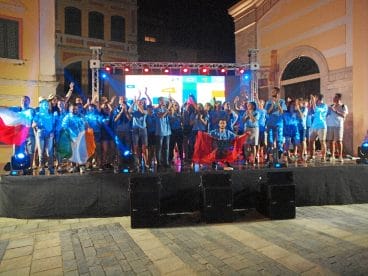 The members of the band that played that night come from Albania, Cameroon, Slovenia, Spain, and Germany, after no small difficulty. The Germans, for example, once they had arrived in Sarajevo, crossed the mountainous region of Montenegro in a rental van, almost a 40 hour drive. They had not even the time to catch their breath when they were divided into small groups to get to know one another. Every day, there was a motto to live by. “Don’t stop giving!” for example. But even looking at nature could inspire a new motto, like seeing a cow resting in the field, taking her time as she chewed her cud. In a hectic, frenzied world, one needs to stop every once in a while, and “ruminate” interiorly on whatever God wants to say to us.
The members of the band that played that night come from Albania, Cameroon, Slovenia, Spain, and Germany, after no small difficulty. The Germans, for example, once they had arrived in Sarajevo, crossed the mountainous region of Montenegro in a rental van, almost a 40 hour drive. They had not even the time to catch their breath when they were divided into small groups to get to know one another. Every day, there was a motto to live by. “Don’t stop giving!” for example. But even looking at nature could inspire a new motto, like seeing a cow resting in the field, taking her time as she chewed her cud. In a hectic, frenzied world, one needs to stop every once in a while, and “ruminate” interiorly on whatever God wants to say to us.  “At the beginning of the camp,” writes Meinolf, “we stopped on the famous Mes Bridge, in the town of Mes. Standing united, hand in hand, all the participants, Muslims, Protestants, Catholics, or of other worldviews, we entrusted ourselves to the mystery of God, in silence. During the week there were 31 workshops that gave the youth the chance to come into contact with the people of that town. Each day more than a hundred children awaited us in Fermentim, on the periphery of Shkodër, where a community of sisters works daily.” Here the youth make key chains and work on the painting and flooring of the nursery school and the house of a family. “Other stops on the tour included the Museum of St Stephen’s Cathedral, in Shkodër, where we remembered the 38 martyrs killed during the communist regime from 1945 to 1974, the Museum of Memory with the horrors committed in those years, and the visit to a mosque. In an interreligious workshop we talked about the relationships between religions in the Balkans. We also planted some trees, painted a few houses in the village, and met the children entrusted to the sisters of Mother Teresa. The day always ended with a festive dinner in the village. “Along with Christoph and Tobias from the agency, 18frames Film+Media Produktion from Hamburg, we prepared the campaign, ‘Yourope,’ in order to engage young Europeans in ‘showing their face’ to demonstrate a Europe without barriers. A videoclip made during the camp, with our faces on a black background, ends with the invitation to send us other brief videos with the same initial phrase: I show my face … Armela took a small mascot from my car – a moose – put it on her shoulders and continued: I show my face because I am from Albania, studying in Austria, sitting in a French car with a German driver and a young friend from Sweden. In a few days more than 50 thousand people had viewed the clip.” Two participants share: “When I heard, a year ago, that the camp would be held at Shkodër, I was skeptical. I come from Albania and I know the mentality of my country. Throughout the preparations, I helped as much as I could. The first two days went well. But when the workshops began, there was so much confusion. ‘Welcome to the chaos!’ I thought. But then, everything turned out differently from how I had imagined it. At the end of the closing concert, I had to explain the campaign, ‘Yourope.’ I could see true joy in the eyes of everyone in the audience! Love had been stronger than the obstacles!” “The evening masses were not empty rituals, but deep faith lived out, which overwhelmed me. The explanations on the meaning of suffering and on the encounter with Jesus in suffering helped me a lot, and I continued to ‘ruminate’ on these for a long time.” See video clip
“At the beginning of the camp,” writes Meinolf, “we stopped on the famous Mes Bridge, in the town of Mes. Standing united, hand in hand, all the participants, Muslims, Protestants, Catholics, or of other worldviews, we entrusted ourselves to the mystery of God, in silence. During the week there were 31 workshops that gave the youth the chance to come into contact with the people of that town. Each day more than a hundred children awaited us in Fermentim, on the periphery of Shkodër, where a community of sisters works daily.” Here the youth make key chains and work on the painting and flooring of the nursery school and the house of a family. “Other stops on the tour included the Museum of St Stephen’s Cathedral, in Shkodër, where we remembered the 38 martyrs killed during the communist regime from 1945 to 1974, the Museum of Memory with the horrors committed in those years, and the visit to a mosque. In an interreligious workshop we talked about the relationships between religions in the Balkans. We also planted some trees, painted a few houses in the village, and met the children entrusted to the sisters of Mother Teresa. The day always ended with a festive dinner in the village. “Along with Christoph and Tobias from the agency, 18frames Film+Media Produktion from Hamburg, we prepared the campaign, ‘Yourope,’ in order to engage young Europeans in ‘showing their face’ to demonstrate a Europe without barriers. A videoclip made during the camp, with our faces on a black background, ends with the invitation to send us other brief videos with the same initial phrase: I show my face … Armela took a small mascot from my car – a moose – put it on her shoulders and continued: I show my face because I am from Albania, studying in Austria, sitting in a French car with a German driver and a young friend from Sweden. In a few days more than 50 thousand people had viewed the clip.” Two participants share: “When I heard, a year ago, that the camp would be held at Shkodër, I was skeptical. I come from Albania and I know the mentality of my country. Throughout the preparations, I helped as much as I could. The first two days went well. But when the workshops began, there was so much confusion. ‘Welcome to the chaos!’ I thought. But then, everything turned out differently from how I had imagined it. At the end of the closing concert, I had to explain the campaign, ‘Yourope.’ I could see true joy in the eyes of everyone in the audience! Love had been stronger than the obstacles!” “The evening masses were not empty rituals, but deep faith lived out, which overwhelmed me. The explanations on the meaning of suffering and on the encounter with Jesus in suffering helped me a lot, and I continued to ‘ruminate’ on these for a long time.” See video clip
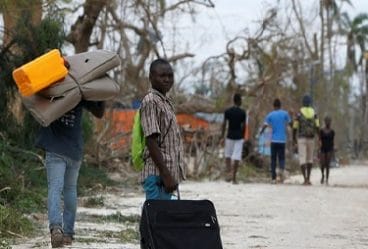
Sep 19, 2017 | Focolare Worldwide
 The words Pope Francis pronounced at the World Youth Day in Rio de Janeiro in 2013, “Go out and serve without fear,” triggered in the youths of the Focolare, the desire to take up the challenge. And so, those of the city of Juiz de Fora (500,000 inhabitants), in the Brazilian state of Minas Gerais, launched a project that gathers the youths of different charisms. “The aim is to testify to unity in the diversities of the Church,” they said, “and be disciples of Christ and missionaries, in line with the invitation of the Latin American bishops to all Christians. Of course, there are difficulties, but this does not discourage us.” It was Archbishop Gil Antonio Moreira who gave the group – of 60 – the name of “Young Continental Missionaries”. “We come from different spiritual experiences – they explained – Renewal in the Spirit, new Communities, parish groups and the Focolare Movement. The start of the mission consists in the personal consecration to God for a year, renewable for another year. And then there are three points that help set the compass: prayer, training and mission, and putting ourselves at the service of others.” F
The words Pope Francis pronounced at the World Youth Day in Rio de Janeiro in 2013, “Go out and serve without fear,” triggered in the youths of the Focolare, the desire to take up the challenge. And so, those of the city of Juiz de Fora (500,000 inhabitants), in the Brazilian state of Minas Gerais, launched a project that gathers the youths of different charisms. “The aim is to testify to unity in the diversities of the Church,” they said, “and be disciples of Christ and missionaries, in line with the invitation of the Latin American bishops to all Christians. Of course, there are difficulties, but this does not discourage us.” It was Archbishop Gil Antonio Moreira who gave the group – of 60 – the name of “Young Continental Missionaries”. “We come from different spiritual experiences – they explained – Renewal in the Spirit, new Communities, parish groups and the Focolare Movement. The start of the mission consists in the personal consecration to God for a year, renewable for another year. And then there are three points that help set the compass: prayer, training and mission, and putting ourselves at the service of others.” F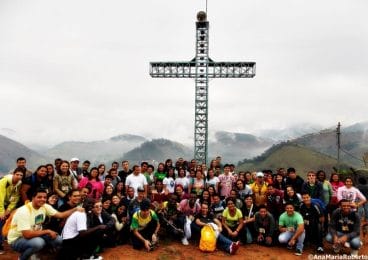 our years after the launch of the project, numerous missions have been undertaken in the parishes of the Juiz di Fora archdiocese, with a hundred visits to the families of the rural communities at the outskirts and violent districts of the city, the asylums and orphanages, and the rehabilitation centre for minors with criminal records. “We created socio-health programmes, as in the case of the battle against dengue (tropical disease), operating wherever there were the highest death rates. In particular, we worked to ensure hygiene in the environment, eliminating rubbish and dump sites that enhance the proliferation of mosquitoes that transmit the disease, but also informing the population through brochures and posters. At the moment we are carrying out special missions in Haiti and in the city of Obidos (State of Pará), in the Educational Centre for juvenile offenders and with the “cartoneros” (rubbish bin collectors of cardboard which is then recycled). We highlighted the importance of their work for the benefit of our great home: the planet Earth. We did not miss out in supporting the youth economically and psychologically, in particularly difficult situations. Furthermore, the “supportive Christmas” project enabled us to gather nonperishable food and other essential goods, that were then donated to a charitable institution.”
our years after the launch of the project, numerous missions have been undertaken in the parishes of the Juiz di Fora archdiocese, with a hundred visits to the families of the rural communities at the outskirts and violent districts of the city, the asylums and orphanages, and the rehabilitation centre for minors with criminal records. “We created socio-health programmes, as in the case of the battle against dengue (tropical disease), operating wherever there were the highest death rates. In particular, we worked to ensure hygiene in the environment, eliminating rubbish and dump sites that enhance the proliferation of mosquitoes that transmit the disease, but also informing the population through brochures and posters. At the moment we are carrying out special missions in Haiti and in the city of Obidos (State of Pará), in the Educational Centre for juvenile offenders and with the “cartoneros” (rubbish bin collectors of cardboard which is then recycled). We highlighted the importance of their work for the benefit of our great home: the planet Earth. We did not miss out in supporting the youth economically and psychologically, in particularly difficult situations. Furthermore, the “supportive Christmas” project enabled us to gather nonperishable food and other essential goods, that were then donated to a charitable institution.”  The Young Continental Missionaries began to settle in other places over time, and reached Obidos (State of Pará), the heart of the Amazons. “Coming in contact with the people, we saw that the call to missionary life echoed in them, and a variety of vocations came to the fore.” Surpassing the confines of Brazil, they even reached Haiti. Last 17 July, a group of six people of the archdiocese of Juiz de Fora and their archbishop set out for Haiti. The situation of that country is really challenging, 7 years after the earthquake that had devastated it: in just 24 seconds more than 300,000 buildings had collapsed among civil and institutional structures, causing the death of 200,000 people. With its magnitude of 7.2 on the Richter scale, it was the worst earthquake registered in the Americas. “Haiti is the poorest periphery of Latin America. And that is where, “Bishop Gil Antonio Moreira wrote, “my eyes and those of the Continental Missionary Youth are focusing on. With great joy we shall go to serve without fear, because the reason, and our goal, is Jesus Christ.” The youth of the Focolare concluded by saying: “Paradoxically, what assures us that we are on the right path are the difficulties we encounter, and in which we try to love a countenance of Jesus Forsaken, He is the secret of our joy and the fruits we have seen.”
The Young Continental Missionaries began to settle in other places over time, and reached Obidos (State of Pará), the heart of the Amazons. “Coming in contact with the people, we saw that the call to missionary life echoed in them, and a variety of vocations came to the fore.” Surpassing the confines of Brazil, they even reached Haiti. Last 17 July, a group of six people of the archdiocese of Juiz de Fora and their archbishop set out for Haiti. The situation of that country is really challenging, 7 years after the earthquake that had devastated it: in just 24 seconds more than 300,000 buildings had collapsed among civil and institutional structures, causing the death of 200,000 people. With its magnitude of 7.2 on the Richter scale, it was the worst earthquake registered in the Americas. “Haiti is the poorest periphery of Latin America. And that is where, “Bishop Gil Antonio Moreira wrote, “my eyes and those of the Continental Missionary Youth are focusing on. With great joy we shall go to serve without fear, because the reason, and our goal, is Jesus Christ.” The youth of the Focolare concluded by saying: “Paradoxically, what assures us that we are on the right path are the difficulties we encounter, and in which we try to love a countenance of Jesus Forsaken, He is the secret of our joy and the fruits we have seen.”
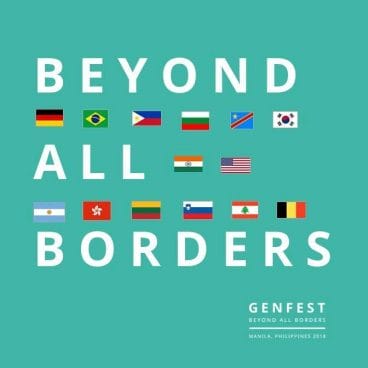
Sep 14, 2017 | Focolare Worldwide
 Born from the determination to redesign a new geography that targets the bringing down of personal and planetary limits and fences, the world march of the Gen and Youth for a United World towards the 11th edition of the GenFest will be held from 6 – 8 July 2018 in Manila (Philippines). The central program will be held at the Metro Manila World Trade Center, while all the workshops will be held at the De La Salle Universityand other universities. It will be entitled “BEYOND ALL BORDERS.” Asia will thus be the continent of the future and of the youth who will host this convention. According to the data of the U. S. Census Bureau, three billion youths in the world are below 25 years of age and 60% of these live in Asia. And so, almost half of the Asian population (over 4 billion people) are under 25. “It is clear that the event could not but be held in our continent,” explained Kiara Cariaso, a Filipino and member of the organizing team. “We want the world to see not only the network of projects, camps, solidarity actions, support to lawfulness, and “no” to war and armaments, but also the solitude, abandonment and superficial relationships which millions of youth scattered around the world are already engaged in.” Aleppo, Bethlehem, Turunga, Mumbai: Genfest 2018 has been launched in various cities around the world. “Also this time the Genfest will be a milestone, essential to the journey towards a united world,” Maria Guaita and Marco De Salvo of the United World Youth’s central secretariat explained, “to share the ongoing endeavours for unity and peace, and also to gain strength and courage from one another. Many of the youths live in territories of war, conflict and social distress. This is the frontline where many have chosen to start changing the world.” “We are working various fronts: we are in the peripheries, but we engage in education, sport and solidarity,” pointed out Rafael Tronquini, Brazilian, of the Genfest Marketing Team – who has been in Manila for 5 months now, “We want to be there where we see the needs and hear our people’s cries for help at all latitudes. We could summarise the Genfest logo with the motto: ‘less is more’. There are infinite challenges and barriers but what matters is to overcome them together and take one step ahead towards unity.” y4uw.org/ https://youtu.be/C8NvjNYgNEc
Born from the determination to redesign a new geography that targets the bringing down of personal and planetary limits and fences, the world march of the Gen and Youth for a United World towards the 11th edition of the GenFest will be held from 6 – 8 July 2018 in Manila (Philippines). The central program will be held at the Metro Manila World Trade Center, while all the workshops will be held at the De La Salle Universityand other universities. It will be entitled “BEYOND ALL BORDERS.” Asia will thus be the continent of the future and of the youth who will host this convention. According to the data of the U. S. Census Bureau, three billion youths in the world are below 25 years of age and 60% of these live in Asia. And so, almost half of the Asian population (over 4 billion people) are under 25. “It is clear that the event could not but be held in our continent,” explained Kiara Cariaso, a Filipino and member of the organizing team. “We want the world to see not only the network of projects, camps, solidarity actions, support to lawfulness, and “no” to war and armaments, but also the solitude, abandonment and superficial relationships which millions of youth scattered around the world are already engaged in.” Aleppo, Bethlehem, Turunga, Mumbai: Genfest 2018 has been launched in various cities around the world. “Also this time the Genfest will be a milestone, essential to the journey towards a united world,” Maria Guaita and Marco De Salvo of the United World Youth’s central secretariat explained, “to share the ongoing endeavours for unity and peace, and also to gain strength and courage from one another. Many of the youths live in territories of war, conflict and social distress. This is the frontline where many have chosen to start changing the world.” “We are working various fronts: we are in the peripheries, but we engage in education, sport and solidarity,” pointed out Rafael Tronquini, Brazilian, of the Genfest Marketing Team – who has been in Manila for 5 months now, “We want to be there where we see the needs and hear our people’s cries for help at all latitudes. We could summarise the Genfest logo with the motto: ‘less is more’. There are infinite challenges and barriers but what matters is to overcome them together and take one step ahead towards unity.” y4uw.org/ https://youtu.be/C8NvjNYgNEc
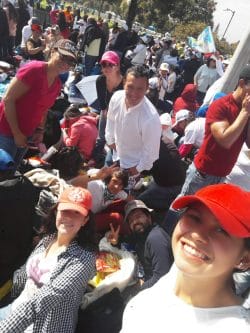
Sep 13, 2017 | Focolare Worldwide
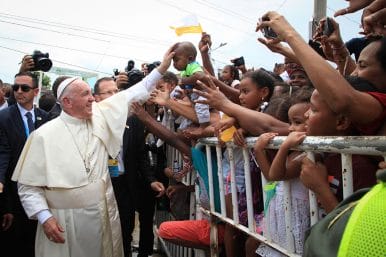
Foto: Jose-MIguel-Gomez – Conferenza Episcopale Colombiana
 Cartagena de Indias, north of Colombia, is the home of the Shrine of St Peter Claver (1581-1654). He was declared a saint in 1888 and had been a Spanish Jesuit who dedicated himself to the tragic victims of slavery. At the suggestion of the Jesuits, after the peace accord between the government and the Farc which had put an end to the 50 years of conflict with 200 thousand dead and tens of thousands missing, it became the capital of human rights. The Pope visited the poorest neighbourhoods, stopping in at the house of 77 year old Lorenza Perez, who cooks and distributes meals to anyone in need. “I’m the poorest of the poor,” she says. “But the Pope chose my house to tell the world to have more love for those that are discarded. Susanna Nuin explains: “The Pope’s speeches had two dimensions: on conceptual, with strong and precise clarifications; and the other gestural, to express his closeness to a people that has suffered much. His departure left us with a sense of loss, but also a sense of fulfilment. His visit has instilled a new way of living in the hearts of the Colombian people, no longer from a passive stance, waiting for a peace that never comes, succumbing to a polarization that makes peaceful coexistence impossible. The young people played a fundamental role, who felt like they had been invested with a task. Yolima Martínez recalls the Pope’s appeal: “You young people have a special gift for recognizing the suffering of others.” Laura Isaza: “Peace is a process that engages all generations, but ours especially.” Manuel echoes her words: “The Pope’s visit has clarified to the Colombians that peace isn’t a political matter, but culture that needs to be built. As Focolare members we feel even more committed to listen to Pope Francis when he talks about a culture of encounter that we have to continue to build.”
Cartagena de Indias, north of Colombia, is the home of the Shrine of St Peter Claver (1581-1654). He was declared a saint in 1888 and had been a Spanish Jesuit who dedicated himself to the tragic victims of slavery. At the suggestion of the Jesuits, after the peace accord between the government and the Farc which had put an end to the 50 years of conflict with 200 thousand dead and tens of thousands missing, it became the capital of human rights. The Pope visited the poorest neighbourhoods, stopping in at the house of 77 year old Lorenza Perez, who cooks and distributes meals to anyone in need. “I’m the poorest of the poor,” she says. “But the Pope chose my house to tell the world to have more love for those that are discarded. Susanna Nuin explains: “The Pope’s speeches had two dimensions: on conceptual, with strong and precise clarifications; and the other gestural, to express his closeness to a people that has suffered much. His departure left us with a sense of loss, but also a sense of fulfilment. His visit has instilled a new way of living in the hearts of the Colombian people, no longer from a passive stance, waiting for a peace that never comes, succumbing to a polarization that makes peaceful coexistence impossible. The young people played a fundamental role, who felt like they had been invested with a task. Yolima Martínez recalls the Pope’s appeal: “You young people have a special gift for recognizing the suffering of others.” Laura Isaza: “Peace is a process that engages all generations, but ours especially.” Manuel echoes her words: “The Pope’s visit has clarified to the Colombians that peace isn’t a political matter, but culture that needs to be built. As Focolare members we feel even more committed to listen to Pope Francis when he talks about a culture of encounter that we have to continue to build.”

 “Many of us stepped forward right away to help, along with the overwhelming majority of Mexican people, even though we were completely grasped by fear, as we tried to gather the requests for help that were coming in from every corner Mexico City and from the regions of the outback that were also hard hit. The strong sense of solidarity was everywhere. Hotels opened their doors to those who had lost homes. Doctors and psychologists offered services for free; families cooked and shared soup for everyone. Hundreds of volunteers worked hard without rest. They were all ordinary people who a few hours before were workers, sellers, housewives and employees. Once again in the midst of an emergency Mexicans showed their true colours, never losing hope and spreading joy and enthusiasm even amidst the darkest moments. Streams of people helped out in simple ways, giving the appearance of a living giant rising from the dust.
“Many of us stepped forward right away to help, along with the overwhelming majority of Mexican people, even though we were completely grasped by fear, as we tried to gather the requests for help that were coming in from every corner Mexico City and from the regions of the outback that were also hard hit. The strong sense of solidarity was everywhere. Hotels opened their doors to those who had lost homes. Doctors and psychologists offered services for free; families cooked and shared soup for everyone. Hundreds of volunteers worked hard without rest. They were all ordinary people who a few hours before were workers, sellers, housewives and employees. Once again in the midst of an emergency Mexicans showed their true colours, never losing hope and spreading joy and enthusiasm even amidst the darkest moments. Streams of people helped out in simple ways, giving the appearance of a living giant rising from the dust.  The disaster has also hit cities, such Puebla, Mexico City, Morelos, Chiapas and Oaxaca. Several members of our community offered their help, especially in Puebla and Morelos and other towns where assistance arrived more slowly. One family from Mexico City set up a collection centre in their own home, and then moved to Morelos to distribute foodstuffs and basic necessities to the neediest among the people. The young people from Mariapolis El Diamante went to Contla, located in the State of Pueblo, which was very hard hit by the earthquake. They removed rubble, loaded and delivered foodstuffs, and consoled those who had lost everything. To reach this particular community, which is located in a place that is hard to reach, they had to cross a river and pass over a deep ravine on a rope bridge they constructed on the spot. Meanwhile, the Economy of Communion group from Puebla organized an assistance project at Sant’Antonio Alponocan in another community of the region. Finally, with the goal of coordinating the efforts, we created an emergency committee in Mexico City that launched a census of the damage and of the needs.
The disaster has also hit cities, such Puebla, Mexico City, Morelos, Chiapas and Oaxaca. Several members of our community offered their help, especially in Puebla and Morelos and other towns where assistance arrived more slowly. One family from Mexico City set up a collection centre in their own home, and then moved to Morelos to distribute foodstuffs and basic necessities to the neediest among the people. The young people from Mariapolis El Diamante went to Contla, located in the State of Pueblo, which was very hard hit by the earthquake. They removed rubble, loaded and delivered foodstuffs, and consoled those who had lost everything. To reach this particular community, which is located in a place that is hard to reach, they had to cross a river and pass over a deep ravine on a rope bridge they constructed on the spot. Meanwhile, the Economy of Communion group from Puebla organized an assistance project at Sant’Antonio Alponocan in another community of the region. Finally, with the goal of coordinating the efforts, we created an emergency committee in Mexico City that launched a census of the damage and of the needs.  In those hard moments we always kept in mind the words that Our Lady of Guadalupe spoke to San Juan Diego on Mt Tepeyac, asking him to remember them always: ‘Put this in your heart, my small son: Don’t be afraid. Am I not here who am your Mother? Are you not in my shadow, under my protection? Am I not the source of your joy? Are you not in the folds of my mantle, in my embrace? Is there anything else you could need?’” All of us in the Focolare have strengthened our commitment to work for love and brotherhood, for both the physical and spiritual reconstruction of our land.” Mexico City, September 25, 2017
In those hard moments we always kept in mind the words that Our Lady of Guadalupe spoke to San Juan Diego on Mt Tepeyac, asking him to remember them always: ‘Put this in your heart, my small son: Don’t be afraid. Am I not here who am your Mother? Are you not in my shadow, under my protection? Am I not the source of your joy? Are you not in the folds of my mantle, in my embrace? Is there anything else you could need?’” All of us in the Focolare have strengthened our commitment to work for love and brotherhood, for both the physical and spiritual reconstruction of our land.” Mexico City, September 25, 2017 







 The words Pope Francis pronounced at the
The words Pope Francis pronounced at the 


